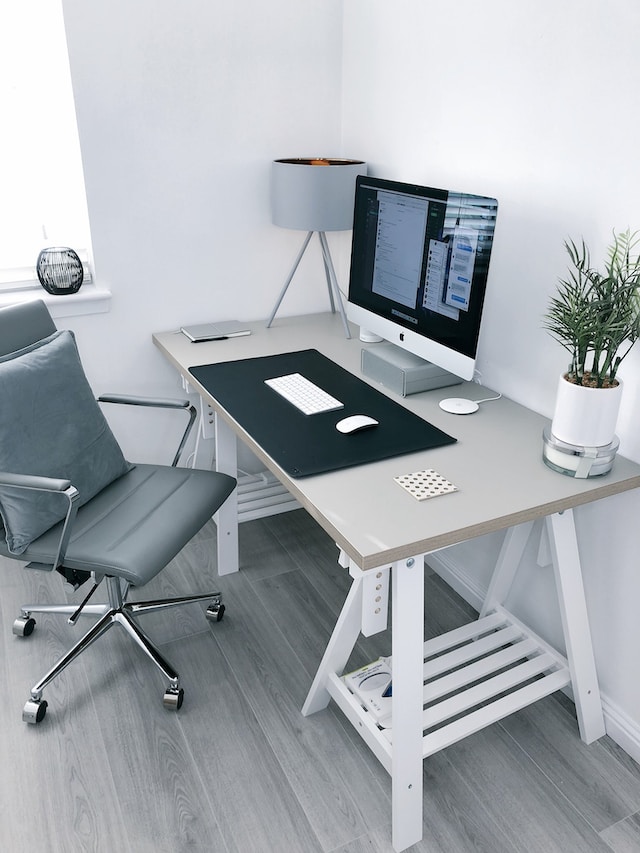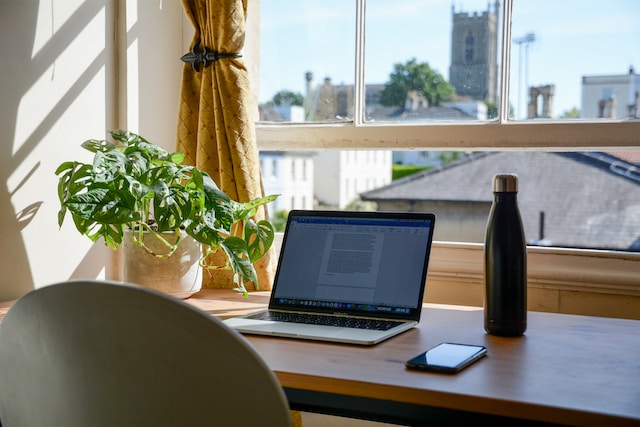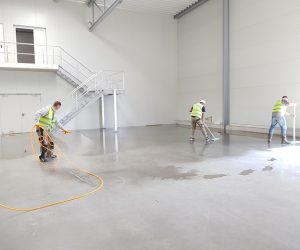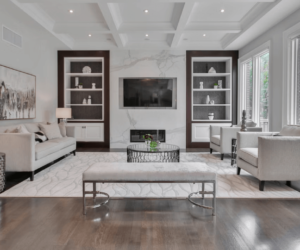In the era of remote work and learning, creating a comfortable and efficient home workspace has become more significant than ever before. An effective workspace not only caters to our professional requirements, but also considers our physical comfort, mental well-being, and overall productivity.
This guide focuses on the various elements that contribute to a beneficial home workspace. We will explore essential design considerations, including ergonomics, lighting, storage solutions, and aesthetics. The overarching goal is to create a space that promotes focus, efficiency, and comfort while reducing possible health risks associated with prolonged desk work.

Assessing your space
Before diving into the design elements, it is crucial to assess your available space and determine what you need in a home workspace. Consider factors such as noise levels, natural light, and accessibility to power outlets and internet connection.
If you have limited space, consider utilizing a corner of your room or repurposing furniture for multiple functions. For example, a small bookshelf can act as a desk and storage space for documents. If you have a larger space, make sure to designate different areas for work and relaxation to maintain a healthy work-life balance.
Not only should the space cater to your physical needs, but it should also have a positive impact on your mental well-being. Avoid clutter and excessive decorations that can be distracting or cause stress. Instead, aim for a clean and organized environment that promotes focus and creativity.
Choosing ergonomic furniture
Ergonomic furniture is a crucial element in creating a comfortable home workspace. Investing in a chair that supports your posture, a desk at an appropriate height, and a keyboard and mouse that promote natural wrist alignment can significantly enhance your work experience. Remember, spending extended periods in poor postures can lead to discomfort or even chronic health problems over time. Therefore, prioritize adjustable and support-focused furniture pieces.
For instance, opt for an office chair that includes lumbar support, adjustable height, and reclining functions. A height adjustable desk will allow you to switch between sitting and standing positions, reducing strain on your back and promoting blood flow. Consider adding a footrest if your feet do not comfortably reach the ground while seated. Keep in mind that the perfect ergonomic setup will vary for each individual, so do some research and try out different options to find what works best for you.
Incorporating Effective Lighting
Lighting plays a pivotal role in setting the mood of your workspace and boosting your productivity. An under-lit or overly bright workspace can strain your eyes, leading to fatigue and reduced efficiency. Natural light is the best option, as it not only brightens up the space but also has positive effects on mental well-being. If possible, set up your workspace near a window where you can reap the benefits of sunlight.
If natural light is not readily available, consider using layered lighting. A combination of ambient, task, and accent lighting can illuminate your workspace effectively. Ambient lights provide overall illumination, task lights focus on specific work areas, and accent lights add a touch of style and personality.
Also, avoid placing your computer screen directly in front of a window or harsh lighting source to prevent glare on the screen. Invest in an adjustable desk lamp for optimal positioning and adjust blinds or curtains as needed to control natural light levels.
Personalizing Your Space
Your home office should be a place that inspires creativity and motivation. Personalizing your workspace can make it more inviting and enjoyable to spend time in. Consider incorporating elements that reflect your personality, such as artwork, plants, or souvenirs from your travels. These items can provide a much-needed break from the monotony of work.
However, try to maintain a balance. Overcrowding your workspace with personal items can be distracting and counterproductive. Aim for a clean, organized space with just enough personal touches to make it feel uniquely yours. Remember, a tidy workspace promotes a tidy mind.
Additionally, adding elements such as scented candles or essential oil diffusers can create a calming and pleasant atmosphere. Experiment with different scents to find what helps you focus and relax.
Harnessing the Power of Color
Color can significantly influence mood and productivity. For instance, blues and greens are often associated with calmness and concentration, while yellows can stimulate creativity. Consider the nature of your work and the kind of environment you wish to create before choosing a color scheme for your workspace.
Bear in mind that color does not have to be limited to walls. You can introduce color through furniture, accessories, or even lighting. Experimenting with different hues can help you create a workspace that is as uplifting as it is functional. Also, take into account how different colors work together and avoid overwhelming combinations.
In addition to color, texture, and patterns can also add interest and personality to your workspace. Incorporate elements such as textured rugs or patterned wallpaper for a touch of visual appeal.
Introducing Plants and Natural Elements
Incorporating natural elements like plants can bring a sense of calm and freshness to your workspace. Studies have shown that indoor plants can improve concentration and productivity by up to 15 percent, reduce stress levels, and boost mood. Choose low-maintenance plants like succulents or snake plants if you’re not particularly green-thumbed.
Beyond plants, consider incorporating other natural elements like wood or stone. A wooden desk or stone wall can introduce texture and warmth into the room, creating an inviting and comfortable workspace. Remember, the closer our connection with nature, the happier and more productive we tend to be. Not only are natural elements aesthetically pleasing, but they can also have a positive impact on our overall well-being.

Creating a comfortable and productive home workspace is a valuable investment that can dramatically enhance your work-from-home experience. By carefully assessing your space, choosing ergonomic furniture, incorporating effective lighting, personalizing your workspace, harnessing the power of color, and introducing plants and natural elements, you’re not just designing a physical space.
You’re crafting an environment that nurtures creativity, focus, and well-being. Remember, there’s no one-size-fits-all solution to designing the perfect home office. It’s about understanding your individual needs, preferences, and work style, and creating a space that supports them. So, take these tips and make them your own. Happy designing!



